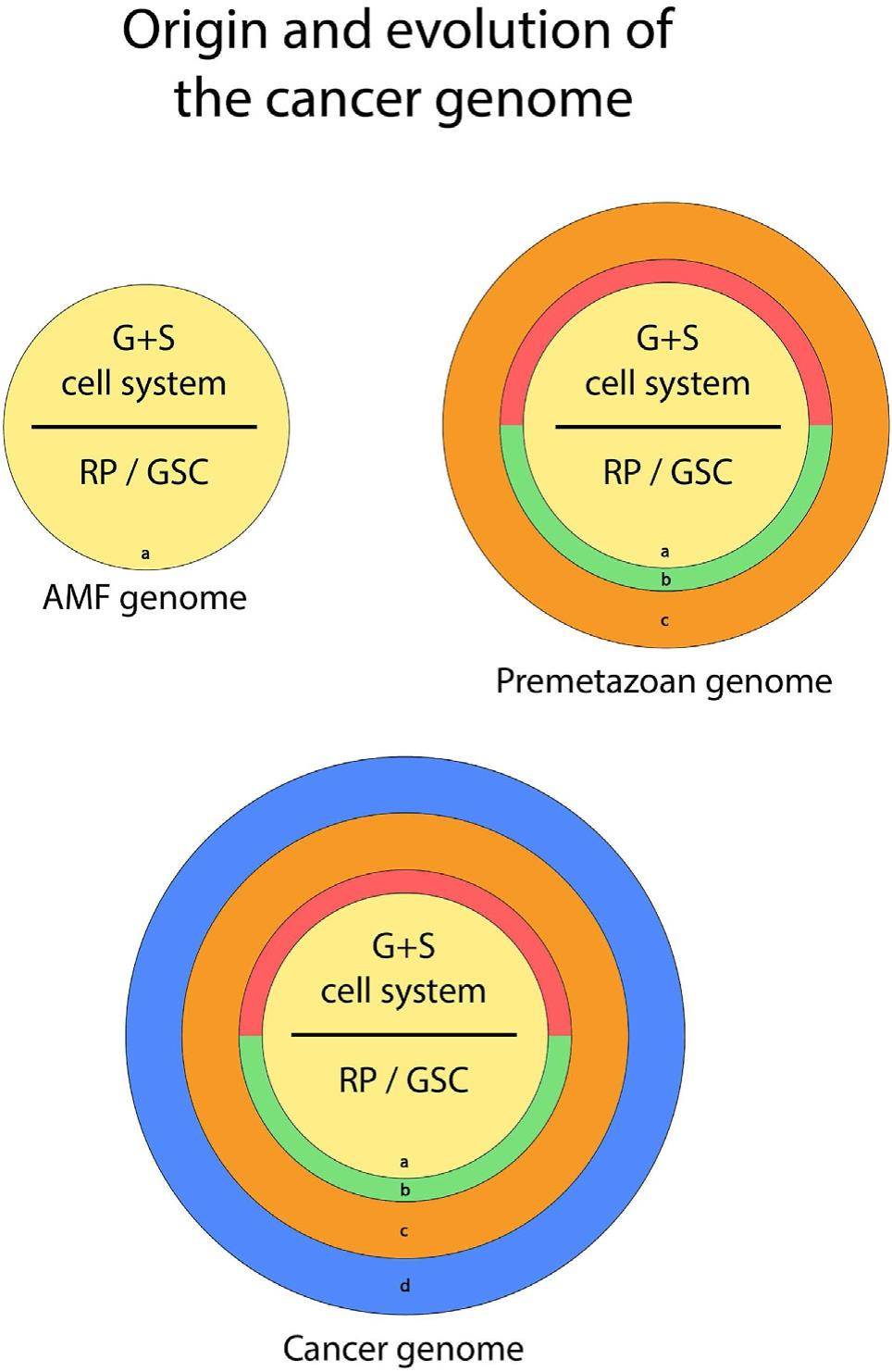
Cancer exploits a late premetazoan gene module conserved in the human genome


From an evolutionary perspective, the human cancer genome is based on an ancient gene module developed by the common ancestor of the Amoebozoa, Metazoa, and Fungi (AMF). The transition phase to multicellularity (premetazoan period) was a rather long period of evolutionary attempts and failures. During this time, suppressor genes were evolved to deactivate the G + S cell system inherited from the AMF ancestor, and anti-suppressor genes evolved to reactivate it in case of failed evolutionary attempts. These suppressor and anti-suppressor genes were the archetypes of tumor suppressors and oncogenes. Genes from the failed evolutionary attempts were not discarded but added as remnants to the so-evolved premetazoan genome. During the subsequent evolution of metazoans and animals, the reactivation of the premetazoan genome generates cancer. Animal cancers evolved many specific anti-host genes. The human cancer genome consists of (i) founder germ and soma G + S genes belonging to the AMF cell system, (ii) evolutionary failed gene packages from the premetazoan evolution, and (iii) specific anti-host genes evolved during animal evolution (specific anti-host genes). All these gene packages and regulatory gene networks generate the phenotypic heterogeneity of cancer and tumors.
